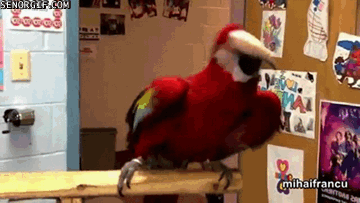Science
Related: About this forumA Simple Chemical Shift Explains Why Parrots Are So Colorful, Study Suggests
Unlike other birds, which get pigments from their diets, parrots produce their own—but scientists never fully understood the underlying mechanisms, until now
Sarah Kuta
Daily Correspondent
November 1, 2024

The researchers studied the dusky lory (pictured) and the rosy-faced lovebird. Tim Felce (Airwolfhound) via Wikimedia Commons under CC BY-SA 2.0
Flamingos get their signature pink hue by eating shrimp, while boobies’ feet turn bright blue because of their fishy diets.
But how do parrots get their vivid red, yellow and green feathers? This query has long perplexed scientists, but, now, they say they’re one step closer to solving the mystery.
A simple chemical tweak governed by a single enzyme determines the color of a parrot’s plumage, researchers report this week in a new paper published in the journal Science. Their findings not only help answer a long-standing question about parrots, but they could also offer broader insights into evolution and color variation throughout the animal kingdom.
“It is a huge step forward in avian color genetics,” says Rosalyn Price-Waldman, an evolutionary biologist finishing her PhD at Princeton University who was not involved with the research, to NPR’s Ari Daniel.
More:
https://www.smithsonianmag.com/smart-news/a-simple-chemical-shift-explains-why-parrots-are-so-colorful-study-suggests-180985380/
eppur_se_muova
(38,723 posts)Colorful feathers with high levels of psittacofulvin resist feather-degrading Bacillus licheniformis better than white ones.[6]
https://en.wikipedia.org/wiki/Psittacofulvin ...
Goonch
(3,878 posts)
SCantiGOP
(14,420 posts)that animals don't perceive color the same as we do. The orange stripes of a tiger would seem to be a disadvantage when they are hunting in dense undergrowth, but most of their prey see orange the same as green, so it actually is the perfect shade to blend in to the background undetected.